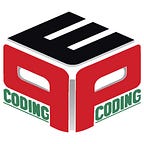System design is referred to the process of designing components and interfaces of a system along with designing the architecture to meet the requirements of the end-user.
It’s impossible to overlook system design when it comes to tech interviews! In the interview, almost every IT behemoth, whether it’s Facebook, Amazon, Google, or another, asks a series of questions based on System Design concepts like scalability, load balancing, caching, and so on during interviews. This System Design blog intends to help you understand and grasp System Design ideas in the most effective way possible, from the beginning to the end.
In terms of software engineering, system design has its own value and relevance in the whole system development process. Although it may appear to be as easy as anything or simply the design of systems, it actually refers to a methodical and rigorous approach to designing a system that meets all of the practical requirements, including adaptability, efficiency, and security. The process of establishing the architecture, components, modules, interfaces, and data for a system in order to meet certain criteria is known as systems design. The application of systems theory to product development is known as systems design.
Before proceeding with the subject of system design, it is necessary to clarify a few aspects:
- Everything that is generated is not as self-evident as it might seem, systems are not built in a vacuum.
- They’re made to fit the needs of the people who utilize them.
- They aren’t just meant to fix current difficulties; they’re also meant to come up with workable answers for problems that may develop in the future.
- From the blueprint to the finished result, the entire process of system development entails taking into account all important elements, determining the needed requirements, and developing a functional system based on the professionals’ strong technical, analytical, and development abilities.
Coming back to the explanation we stated earlier, of what the system design phase is and how important it is in the system development process, it can be further explained as:
- The system designing phase begins after the system analysis phase is done, and it is an essential step in the system development process.
- It’s worth noting that the output or specifications obtained during the system analysis phase become an input in the system design phase, resulting in workouts based on user-defined estimates.
The significance of this phase may be appreciated since it entails identifying data sources, as well as the nature and type of data that is accessible. In order to construct a salary system, for example, inputs like attendance, leave data, additions, or deductions are required. This makes it easier to figure out what sort of data is accessible and who supplies it to the system, allowing the system to be developed with all important elements in mind.
Furthermore, system design ensures that the system is developed in such a manner that it meets the needs of the users and puts them at rest since it is user-oriented. One of the key goals of this phase, in terms of flexibility, is to create a system that can be dynamic in nature and sensitive to changes as needed.
Another essential goal of the system design process is to create a system that can perform effectively, giving the desired output while also being sensitive to time within a certain time limit. The importance of data dependability and physical security cannot be overstated. In this regard, the system design process guarantees that the system’s security mechanisms are effective and efficient.
To get in-depth knowledge on System Design, visit Pepcoding. Our Free Resources and Programs are efficient for the learner in you. For more information, get in touch with us.
Thanks for reading this far.
Author: Sejal Shaw
Also read:
